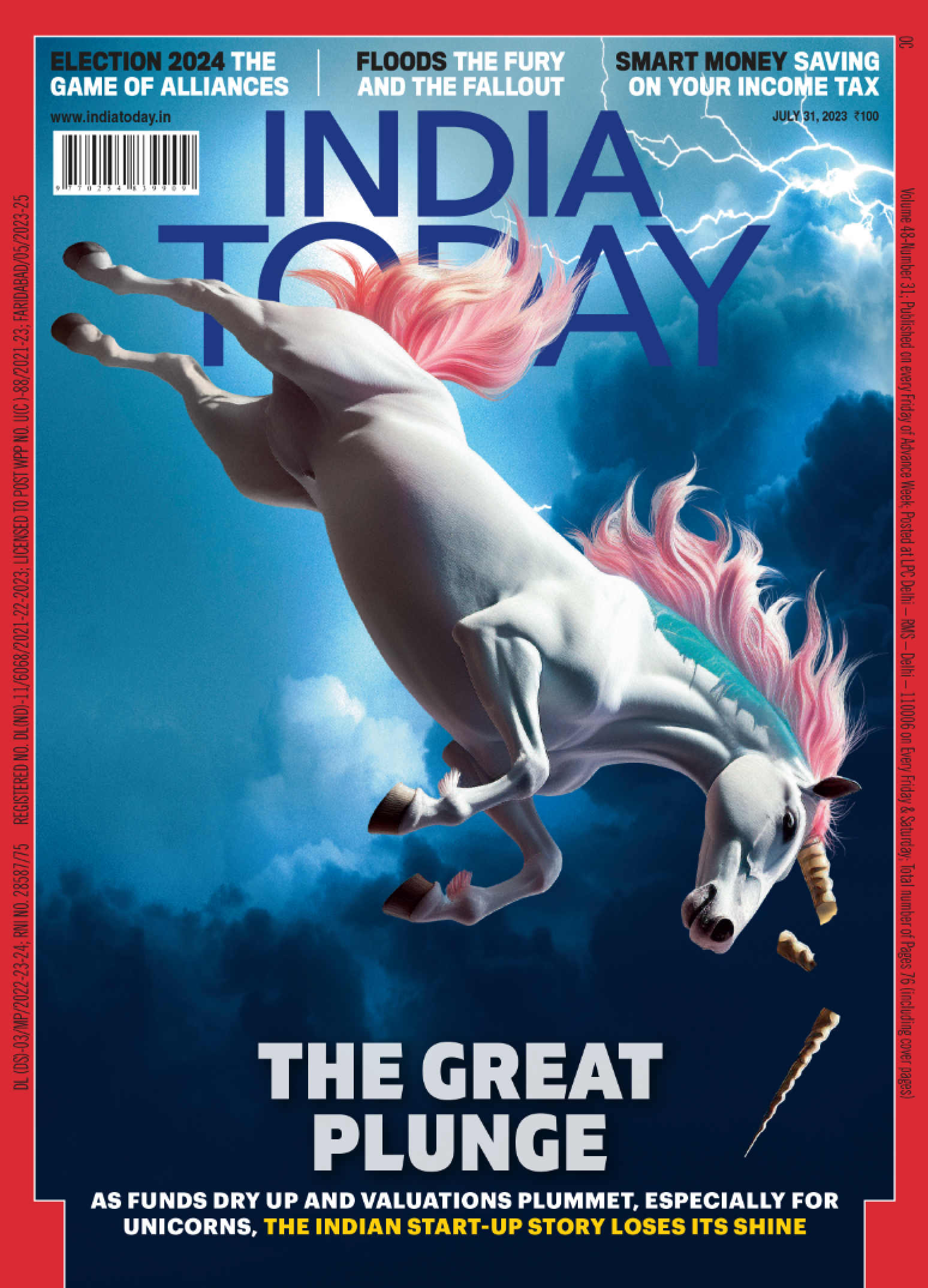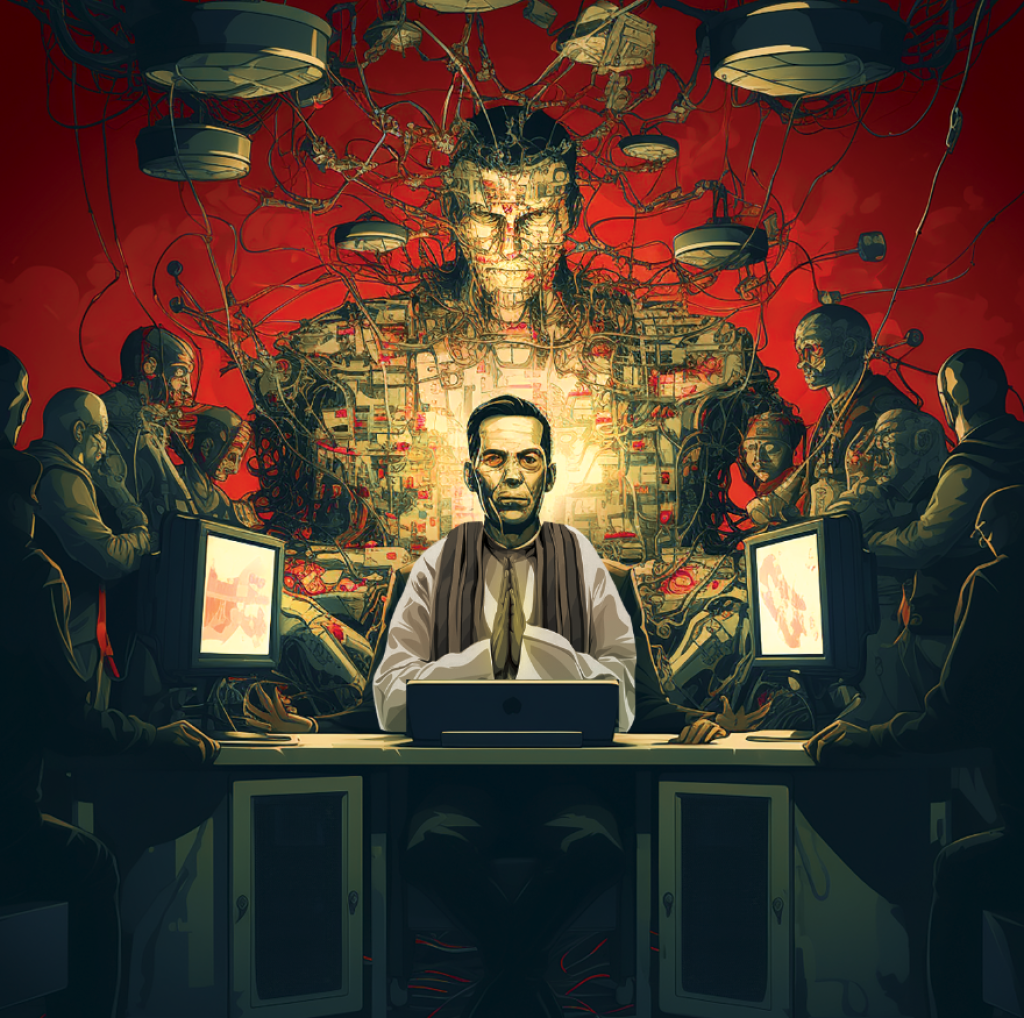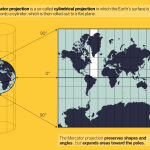Nilanjan Das, the Group Creative Editor at India Today, engages in an exclusive conversation with tksajeev of newspaperdesign, delving into a comprehensive discussion on various aspects of artificial intelligence in the realm of design.
How has AI helped you in your design process?
AI has significantly transformed my design approach as a graphic designer and creative director. AI-powered tools generate initial design concepts, optimizing efficiency and sparking new ideas. Machine learning algorithms analyze trends and user behavior, guiding the creation of designs that resonate with target audiences. Automation of repetitive tasks like image resizing allows for more time on creative refinement. AI aids in color selection, font pairing, and layout optimization, ensuring cohesive and aesthetically pleasing designs. Nevertheless, it’s crucial to balance AI’s benefits with human creativity to maintain a unique and personalized touch in the designs.

AI creation by Nilanjan Das
What are some of the challenges you have faced in using AI for design?
Incorporating AI into design has brought both promise and hurdles. Firstly, there’s the learning curve, needing time to master AI design tools and integrate them seamlessly. Secondly, ensuring AI-generated designs align with the brand and resonate with the audience poses a challenge, as AI may not always grasp human nuances. Striking the right balance is crucial; excessive reliance on AI may stifle human creativity and dilute the personal touch essential in design. Despite these challenges, AI holds immense potential to enhance efficiency, spark creativity, and aid in design decisions when utilized judiciously and in harmony with human creativity.

AI creation by Nilanjan Das
How do you ensure that the AI-generated designs are aligned with your creative vision?
Certainly, here are the strategies to ensure AI-generated designs align with my creative vision as a creative director and graphic designer:
- Establish Clear Guidelines
Define design elements, brand essence, and target audience preferences upfront to guide the AI tools effectively.
- Regular Oversight and Feedback
Actively review AI-generated concepts and provide feedback, ensuring alignment with the intended creative direction.
- Iterative Refinement
Engage in iterative refinement cycles, incorporating feedback to steer the AI-generated designs towards the desired creative vision.
- Human Creative Input
Integrate skilled designers to further refine AI-generated designs, infusing their artistic insight, unique style, and understanding of the brand identity.
By implementing these strategies, we maintain a balance between AI assistance and human creativity, ensuring the resulting designs resonate with the intended creative vision and project objectives.

Nilanjan Das created this cover with the help of AI
What are the ethical considerations of using AI in design?
Ethical considerations when using AI in design are paramount. Firstly, ensuring transparency about AI involvement in design processes is essential, promoting informed consent and trust. Safeguarding user data and privacy when employing AI algorithms that may analyze user behavior is crucial. Avoiding AI biases that could perpetuate stereotypes or discrimination is a priority, necessitating diverse and representative training data. Additionally, being cautious of potential job displacement within the design industry due to AI advancements and upholding the integrity of originality and creativity in designs, crediting appropriately, and responsibly utilizing AI’s capabilities while not relinquishing human control are vital ethical imperatives.

Nilanjan Das created this cover with the help of AI
How do you think AI will continue to change the design industry in the future?
AI is poised to significantly reshape the design industry in the future. Here’s how:
- Efficiency and Automation
AI will streamline design workflows, automating repetitive tasks like layout adjustments, color matching, and resizing, freeing up designers’ time for more creative and strategic endeavors.
- Personalized User Experiences
AI algorithms will analyze user data to tailor designs based on individual preferences, enhancing user engagement and satisfaction by delivering personalized experiences.
- Augmented Creativity
AI-powered tools will inspire and augment creativity by providing design suggestions, generating ideas, and offering innovative solutions, pushing the boundaries of traditional design.
- Design Accessibility
AI will democratize design, making it accessible to a broader audience with user-friendly tools that don’t require extensive design expertise.
- Sustainability Integration
AI can optimize designs for sustainability, aiding in material selection, energy efficiency, and waste reduction, aligning with increasing environmental awareness.
6.Collaboration and Communication
AI-driven language processing and real-time collaboration tools will facilitate smoother communication and collaboration among designers, clients, and stakeholders globally.
While AI offers immense potential, it’s imperative to balance its integration with human creativity and ethics to preserve originality and maintain a human touch in design.

Nilanjan Das created this cover with the help of AI
How has AI helped you improve the user experience of your designs?
AI has been instrumental in enhancing user experiences across various design projects. Firstly, AI-powered analytics provide deep insights into user behavior, enabling data-driven design decisions. Understanding how users interact with designs helps optimize layouts, content placement, and navigation for a more intuitive and engaging experience.
Additionally, AI facilitates personalization by tailoring designs based on user preferences and past interactions. From suggesting products to curating content, personalized design elements make the user feel understood and valued, leading to increased engagement and satisfaction.
Automation through AI expedites repetitive design tasks, ensuring a faster delivery of projects without compromising quality. This efficiency allows for more focus on fine-tuning and perfecting design details that directly impact the overall user experience.
Furthermore, AI’s predictive capabilities aid in anticipating user needs, enabling proactive design choices that anticipate and cater to user preferences, further enhancing the overall experience.
Incorporating AI in the design process has thus significantly improved user experiences by combining data insights, personalization, efficiency, and anticipatory design, resulting in designs that are more engaging, intuitive, and user-centric.

AI creation by Nilanjan Das
Does AI help you create more user-friendly and intuitive interfaces?
Certainly! As a creative director and graphic designer, AI serves as a powerful ally in crafting user-friendly and intuitive interfaces:
- Informed Design Decisions
AI sifts through vast user data, providing invaluable insights into preferences and behaviors. This knowledge informs design choices, ensuring our interfaces resonate with the intended audience.
- Proactive Usability Testing
AI algorithms simulate user interactions, allowing us to foresee and address potential usability issues prior to launch. This proactive approach fosters iterative improvements, resulting in a more intuitive design.
- Guidance with Design Patterns
AI identifies and predicts effective design patterns, offering guidance to implement elements that users find familiar and easy to navigate.
- Enhanced Language Interaction
Through natural language processing (NLP), AI helps us better understand user queries and feedback, refining chatbots, search features, and more for a user-friendly interface.
- Personalized Experience
AI tailor’s interfaces based on individual user preferences, delivering a personalized and engaging user journey.
Leveraging these AI capabilities, we create interfaces that seamlessly blend creativity with user-centric design, ensuring a delightful and intuitive user experience.

AI creation by Nilanjan Das
How has AI helped you generate more creative and engaging designs?
AI has significantly bolstered my ability to generate creative and engaging designs in several impactful ways:
- Idea Generation and Inspiration
AI algorithms offer a wealth of inspiration by analyzing vast design databases, suggesting unique approaches, styles, and elements that can fuel creativity and spark new ideas.
- Style Transfer and Adaptation
AI tools can mimic various artistic styles and adapt them to different design projects, allowing for experimentation and innovation while maintaining engagement through diverse aesthetics.
- Automated Tedious Tasks
AI’s automation of repetitive tasks, such as image cropping, color palette generation, or font selection, liberates time for strategic thinking and refining designs, leading to more compelling and engaging visuals.
- Enhanced Collaboration
AI-powered collaboration platforms facilitate real-time feedback, seamless communication, and version control, ensuring a smooth workflow among team members. This fosters a collaborative environment conducive to producing engaging designs.
- User-Centric Design
AI-driven user data analysis provides valuable insights into user behaviors and preferences. This data informs design decisions, allowing for tailored and user-centric designs that resonate and captivate the audience.
By harnessing AI’s capabilities, I’m empowered to infuse creativity, efficiency, and user- centricity into my designs, ultimately delivering captivating and engaging visual experiences.

Nilanjan Das created this cover with the help of AI
Is AI helping you save time and effort in the design process?
Absolutely, AI has been a significant time and effort saver in the design process:
- Automating Repetitive Tasks
AI handles mundane and repetitive tasks like resizing images, selecting fonts, or organizing files, freeing up my time to focus on more creative and strategic aspects of the project.
- Speeding Up Workflows
AI-powered design software expedites the design workflow by generating initial concepts and layouts based on specific requirements, providing a valuable starting point for further refinement.
- Efficient Data Analysis
AI swiftly processes and analyzes large volumes of data, providing insights into user behavior, preferences, and design trends. This quick analysis informs design choices and enhances the decision-making process.
- Instant Design Mockups
AI can rapidly generate design mockups based on input parameters, enabling a quick visualization of design concepts, which accelerates the iterative design process.
- Streamlining Communication
AI-facilitated communication tools streamline collaboration within the team and with clients, reducing time spent on coordinating feedback and ensuring smoother project progression.
By automating routine tasks and expediting various design processes, AI optimizes my workflow, allowing me to allocate more time and effort towards creative and innovative design solutions.
Will AI help you collaborate more effectively with other designers?
Absolutely, AI has the potential to greatly enhance collaboration among designers:
- Real-time Collaboration Platforms
AI-powered collaboration platforms facilitate real-time feedback, enabling seamless
communication and collaboration on design projects, irrespective of geographic locations.
- Automated Version Control
AI can automate version control, ensuring that all team members are working on the latest iteration of a design. This eliminates confusion and enhances efficiency within the collaborative process.
- Intelligent Design Suggestion
AI can suggest design elements based on project requirements, aiding in brainstorming sessions and providing a starting point for discussions among team members.
- Language Translation and Communication
AI’s language translation capabilities break down language barriers, promoting effective communication and understanding among a diverse team.
- Enhanced File Organization
AI can intelligently organize and tag design files, making it easier for team members to locate and access the right assets during collaborative projects.
By leveraging AI in these ways, designers can work more effectively as a team, leading to smoother collaboration, improved creativity, and ultimately, the delivery of high-quality design projects.

AI creation by Nilanjan Das
Will AI replace conventional designers in the near future?
AI is unlikely to completely replace conventional designers in the near future. While AI has made significant strides in automating repetitive tasks and aiding in certain aspects of the design process, it lacks the ability to fully replicate the creative intuition, emotional understanding, and unique problem-solving skills that human designers possess.
Design is a multifaceted discipline that involves a deep understanding of human behavior, culture, emotion, and aesthetics—qualities that AI, as of now, cannot fully comprehend. AI is a tool that can enhance and complement a designer’s capabilities, offering efficiency, data- driven insights, and automation for routine tasks. However, the human element of creativity, critical thinking, empathy, and artistic expression remains irreplaceable.
In essence, AI should be viewed as a powerful assistant, allowing designers to be more productive, experiment with new ideas, and focus on higher-level creative thinking, rather than a threat to their profession. Collaboration between AI and designers will likely be the key to the future of design, where human creativity guides and defines the application and outcomes of AI in the field.
![]()





